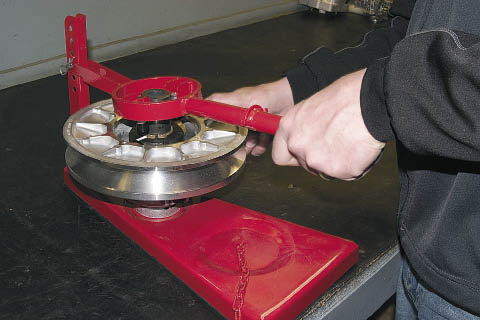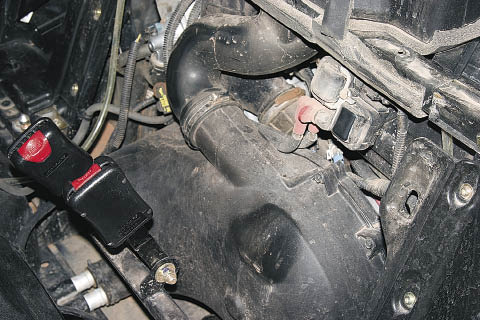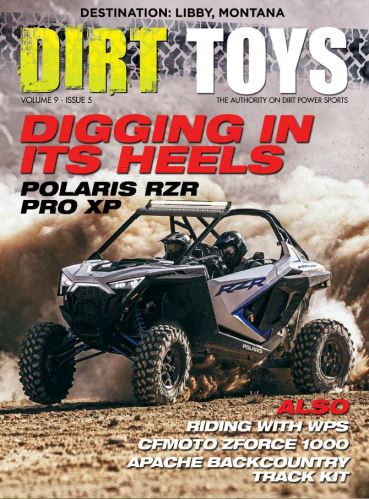Tools
Most of the tools used to work on the clutches are basic hand tools most people would have in the garage like wrenches, sockets, ratchets, pliers and screwdrivers, but there are a few specialty tools needed in order to remove the clutches, change out parts or perform maintenance.

A clutch puller is used to remove the primary clutch from the engine. It looks like an oversized bolt and threads into the clutch until it bottoms out on the crankshaft, at which time it will force the clutch backwards and pop it off the crankshaft. This takes some elbow grease and it will make a loud "pop" when it comes loose from the shaft. It is possible to change both the primary weights and spring while the clutch is still attached to the motor so the clutch puller is only needed if you want to remove the clutch for cleaning or other services.
The clutch press tool is a tool used to remove the secondary spring from the clutch and consists of a small frame that the secondary clutch will fit into with a handle that sits over the center of the clutch. The handle can be pushed down to put pressure on the roller assembly or spring in order to remove the snap ring that holds them in place. Because of the high spring pressure on the secondary clutch, the leverage from the handle is necessary to keep the spring from popping out and hitting the user in the face.
Maintenance Prevents Poor Performance
Cleaning and inspecting the clutches is the key to maintaining the CVT system. Periodically remove both clutches from the unit so that they can be disassembled and cleaned. Do not use solvents or oil-based products on the clutches, as these chemicals will absorb into the pores of the aluminum sheaves and then come back out later causing the belt to slip.
 Use hot soapy water and a soft brush to clean all surfaces and parts of each clutch. Once clean, rinse well and inspect each part for wear, rub marks or cracks. If cracks are found, the part is not usable and should be replaced. A cracked clutch will eventually fly apart no matter how small the crack is.
Use hot soapy water and a soft brush to clean all surfaces and parts of each clutch. Once clean, rinse well and inspect each part for wear, rub marks or cracks. If cracks are found, the part is not usable and should be replaced. A cracked clutch will eventually fly apart no matter how small the crack is.
Replace the parts that are worn or damaged and re-assemble the clutches. Any worn parts that are not replaced will cause the clutch to shift poorly, resulting in decreased performance, acceleration and speed. Worn parts can make the clutch shift abruptly, making the unit harder to drive. Make 100 percent sure that both clutches and the belt are clean before re-installing them back on the unit. That means even new belts should be washed in hot soapy water to remove any mold release or residue that could cause the belt to slip. If the belt slips, it will cost you performance.
The Benefits

